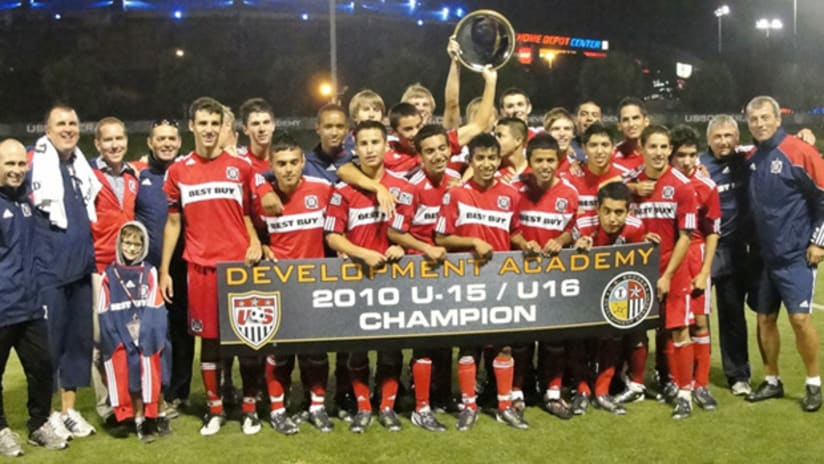In a country as large and expansive as the United States, there are countless areas not touched by Major League Soccer.
But through their youth development initiatives and a unique approach to locating talented young soccer players, the Chicago Fire have managed to extend their reach to unfamiliar territory.
What started as a Premier Development League team started back in 2001, the team’s current setup has grown into a nationwide entity. The Fire’s academy model includes the standard Academy close to home, but also embraces a number of club affiliates all over the country – including the southeast corner of the country.
So far, things have progressed well for the Fire on the youth front, including the signing of Home Grown player Victor Pineda in 2010.
“The way we’re doing it is a lot different, but we’re seeing some tangible positives,” Fire director of player development John Dorn told MLSsoccer.com.
Like most MLS clubs, the Fire operate two youth teams in the USSF Development Academy League, fielding one each at the U-16 and U-18 level. The direct academy located at Toyota Park in Bridgeview, Ill., also includes on Pre-Academy side at the U-14 level, which started last year.
But beyond that, Chicago have extended their reach at both the regional and national level. The Chicago Fire Juniors have eight affiliates that span from the Chicagoland area to Louisiana and Florida.
In the immediate vicinity of Chicago, four clubs are Juniors affiliates – three based in Highland Park, Naperville and Orland Park, with the fourth club located in the Northwest corner of Indiana. Each serves as its own club, but also draws on the Fire for help with player development and training techniques.
Extending beyond that, the Fire have similar affiliations with big clubs as far south as Mississippi, Louisiana and Florida.
“If you look at each of the clubs, our clubs in Mississippi and clubs in Louisiana, they’re very large, well-established clubs in each of their states and in their regions they’ve had a lot of success,” Dorn said.
Not only do these clubs increase the number of players, but it’s also heading into uncharted territory for both the club and MLS.
“Those are areas that the MLS doesn’t touch right now,” Dorn said. “The closest teams to them are obviously in Texas. If you go to New Orleans or Jackson, Mississippi, there’s an MLS presence there. I think that’s big.”
Of course, having these kinds of arrangements with multiple clubs can cause for some headaches at times. But it also gives players – like Maryland’s Patrick Mullins and US U-17 residency player Kellen Gulley – the opportunity to train with the Fire’s first team like they did last summer, or for players from a Juniors team to be brought in as guest players when the Fire academy hits the road tournaments across the country.
It’s a unique approach, and one that appears to be heading in the right direction.


